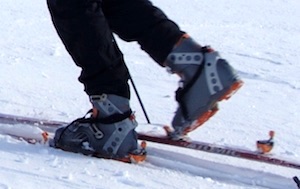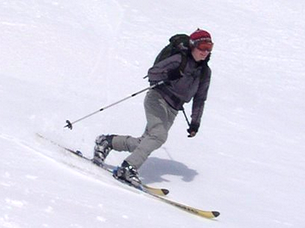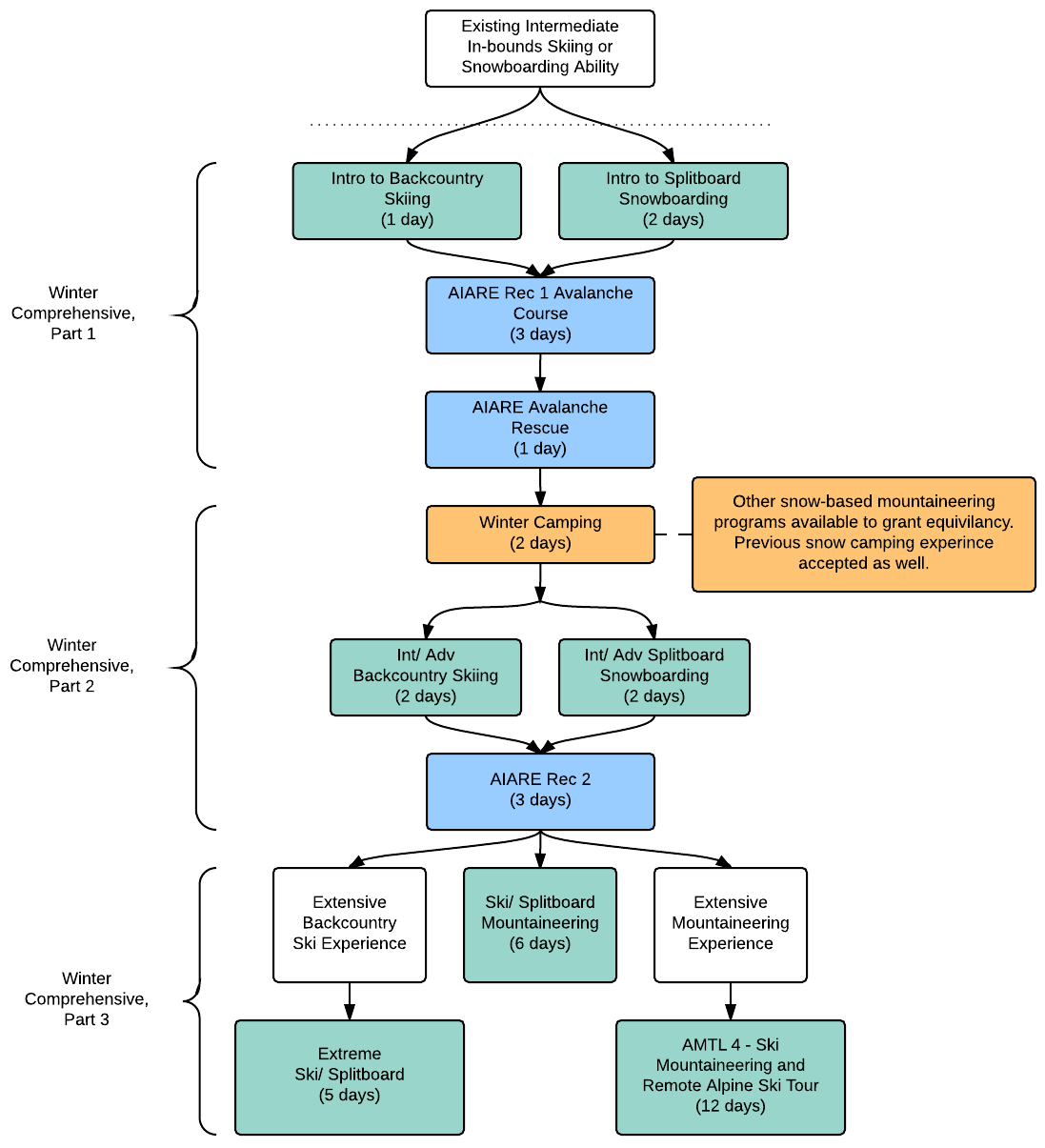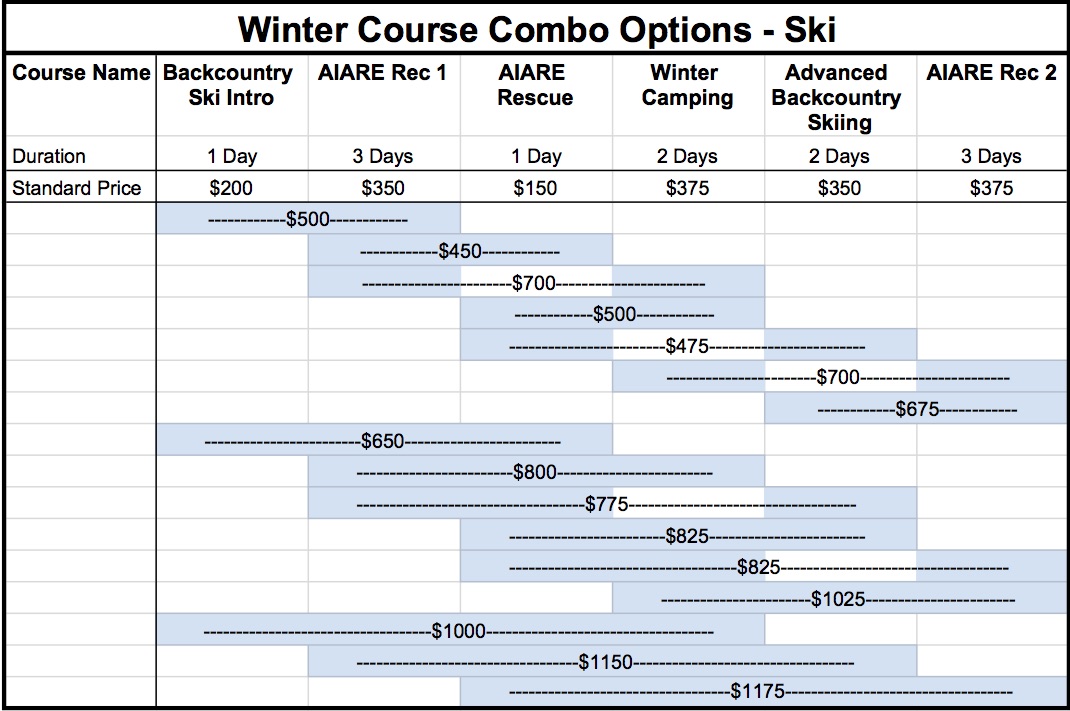Many people, both skiers and mountaineers, consider a pair of skis or a splitboard to be the ultimate tools for travel in the mountains, bar none.
In Washington's North Cascades, snow blankets the alpine zone for as much as nine months of the year. First as fresh powder, then as a deep, largely stable snowpack, and finally as summer firn, the snow covers the rocks, bridges the crevasses, and generally turns the mountains into a playground. Climbing, for many mountain people, becomes a means to an end – and the end is the descent.
Backcountry Skiing
Courses and Guided Programs in Off-Piste Skiing, Alpine Touring, Ski Mountaineering, and Split-Board Snowboarding
Many people, both skiers and mountaineers, consider a pair of skis or a splitboard to be the ultimate tools for travel in the mountains, bar none. In Washington's North Cascades, snow in one form or another blankets much of the alpine zone for as much as nine months of the year. First as fresh powder, then as a deep, largely stable snowpack, and finally as summer firn, the snow covers the rocks, bridges the crevasses, and generally turns the mountains into a playground of speed and kinetic art. Climbing, for many mountain people, becomes a means to an end – and the end is the descent.
In the last fifteen years, backcountry skiing and ski mountaineering have made a resurgence. Gone are the days of skinny tele skis and heavy Silvretta mountaineering bindings, mohair climbing skins and boiled wool Dachstein mitts. Technological innovation has led to feather-light skis, cigarette-box sized avy beacons, and low-maintenance hydrophobic climbing skins.
Yet despite this burst of new activity, in many ways mountain skills instruction still lags behind. For years there has been a dearth of good programs to teach the fundamentals of both technical competence and the 'mountain sense' that underlies safe practice. Many schools offer avalanche safety courses without winter travel skills, or vice versa; while backcountry skiing is most often offered as a guided skiing package, with the client treated as a 'guest' who would rather not earn his or her turns, or learn the complex skills of self-leadership in the winter mountains. Our programs are designed to remedy this situation.
Backcountry Skiing and Ski Mountaineering: The Basics

Alpine touring (AT) boots and bindings
If you're already a downhill skier, once you slip under the ropes and enter the backcountry, techniques and equipment change. Skiers use a whole different vocabulary to talk about the sport. Here is a quick primer.
In order to enable skis to serve as efficient travel tools, rather than tools for simply sliding downhill, a fundamentally different kind of binding is needed, to allow the heel to move up and down freely so a normal walking stride is possible. There are two styles here: alpine touring (also known by its initials, AT, or called by its French name, randonnée); and Telemark skiing ("Tele" for short).
In Alpine Touring, the boot sole is rigid, and the binding is hinged at the toe to allow movement. When an AT skier is ready to descend, he or she clamps the heel down and skis using normal Alpine downhill technique.

Initiating a Telemark turn on Nordic backcountry skis
In Telemark skiing – an outgrowth of Nordic or cross-country – the binding is largely fixed at the toe of the foot; the boot sole bends to allow the heel to rise, and the heel is left free during downhill runs. In order to compensate for the loss of control that comes with a free heel, skiers use a special drop-kneed Telemark turn, which gives their skiing a distinctive style.
To enable the skis to climb uphill, most backcountry skiers use climbing skins, or just "skins" for short. Originally crafted from seal pelts and strapped to the bottom of skis, skins utilized the directional "grain" of the seal fur to glide foward but grab the snow surface once the ski started to slide back. Now made of nylon fibers and attached to the ski with re-usable adhesive, modern skins are functionally the same as when they were invented. At the end of a steep uphill climb, skiers strip the skins off and descend normally.
Once equipped to move freely up and down in the backcountry, a skier has to plan carefully to avoid or mitigate the danger of avalanche. All backcountry travellers carry radio-frequency avalanche beacons, snow probes, and rescue shovels. Learning to use these worst-case-scenario tools is secondary to judgment skills. These are covered in avalanche safety courses.
As the backcountry terrain steepens and becomes more exposed, the equipment and techniques required begin to enter the realm of ski mountaineering. Skiers who cross glaciers will often travel roped together with a climbing rope in case of a crevasse fall. Likewise, a rope can be used to rappel impassable cliffs on an advanced tour. Steep, wind-hardened, or refrozen slopes can necesssitate ski crampons for traction. Some skiers use an ice axe or a specialized self-arrest ski pole called a Whippet to help arrest falls on steep or glaciated terrain.
For snowboarders, the best tool for the backcountry may be a split board, which is split down the middle and can be separated into two ski-like halves to enable cross-country or uphill travel. Bindings and skins function more or less the same as with AT gear. Some riders prefer to use an ordinary snowboard and rely on snowshoes for the ascent.
In the realm of technique, backcountry skiers must become comfortable and precise with maneuvers that might be seen as poor style inbounds. Stem christies become very valuable in breakable crust and other adverse conditions. Side slipping can be used to navigate narrow bottlenecks while maintaining good control. The kick turn enables a skier to efficiently change direction when skinning uphill on steep ground. These seemingly inelegant methods reflect backcountry skiers' need to ski conservatively, since they are often many miles from help should an accident occur.
The AAI Backcountry Skiing Program
Redesigned for 2017 to work hand in hand with the new AIARE avalanche curriculum, AAI's curriculum is modular, and allows skiers and boarders to design a course of study to match their current level of skill and experience. Those with limited on-piste experience can stitch together backcountry skiing skills days, winter camping, and the AIARE recreational courses to get a complete introduction to alpine touring. More experienced on-piste skiers can fast track through an accelerated intro to backcountry, complete the AIARE rec courses, and head into the hills.
Expert skiers and those with larger ambitions can choose between Ski Mountaineering courses, Mt. Baker ski descents, and Extreme Skiing. And aspiring professionals can opt for the AIARE Pro series, mastering the nuances of terrain assessment, rescue, and snow science.
Below is a flowchart showing AAI's different winter course options, and how to progress from one to another as your skills, abilities, and knowledge grow.

Curriculum Options
The linked programs follow a logical progression and each new step builds upon the skills and knowledge that was gained in earlier portions.
By combining together several of our stand-alone courses, you can create a more comprehensive program to give you the skills that you need. If you are new to winter travel, you could combine an Intro to Backcountry Skiing Course with an AIARE Rec 1 Course and an AIARE Rescue Skills Course. Maybe you already took your Rec 1 and are looking to kick your skills up a notch and go on some longer, multi-day tours. In that case, the Winter Camping and the AIARE Rec 2 Courses might be the best match for you. You can combine the courses to make a custom program to fit your needs, whatever they may be.

Please call the AAI office at (360) 671-1505 for more information about our backcountry skiing curriculum.